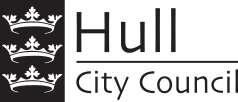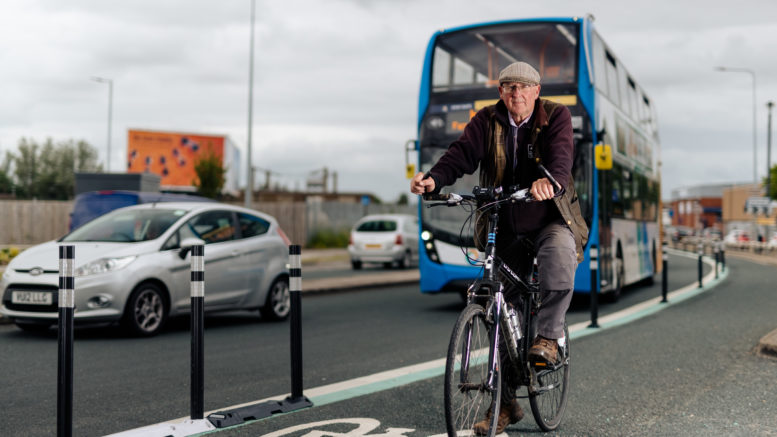The future of Hull’s active travel schemes will be discussed at a meeting next week.
A decision on the schemes including extended bus lane hours and safer cycling routes will be made for the first time since their installation.
Plans to improve cycling and walking in the city were already under way as part of the Local Cycling and Walking Infrastructure Plan (LCWIP). However in June 2020 these plans were accelerated in line with the Government’s Emergency Active Travel Fund, designed to build on the cycling renaissance taking place across the country as a result of the coronavirus pandemic.
In addition, research has shown that cars and vans are now the largest emitter of greenhouse gases, accounting for 27 per cent of the UK’s total emissions, and the Government’s Net Zero Strategy recognises that a transition to greener and more sustainable transport is a key milestone in this.
In a bid to encourage walking and cycling and the ambition to become carbon neutral by 2030, Hull City Council rolled out plans to improve cycling and pedestrian facilities and offer sustainable travel options for everyone.
The move also improved bus efficiency, with Stagecoach East Midlands reporting that journey times are now nine per cent quicker following the installation of 7am – 6.30pm bus lanes.
In Hull, cycle lanes were widened in areas including Freetown Way, and additional ones were introduced in Holderness Road, Spring Bank, Ferensway, Anlaby Road, Hessle Road and Beverley Road.
And now councillors will be asked to make a decision on whether the schemes will become part of Hull’s permanent transport infrastructure, paving the way for more accessible, greener and sustainable travel.
If the proposals are agreed, Freetown Way could return to two lanes of traffic whilst retaining a segregated cycle lane – delivering a space that is fit for everyone.
Councillor Dean Kirk, portfolio holder for highways and transport said: “Changes to the roads and pavements sought to prioritise safer cycling and walking, and since the installation of the first active travel scheme in Freetown Way, we’ve monitored the impact in terms of their usage, effect on public transport efficiency, and public responses.
“The feedback has been encouraging, with some very supportive comments from people who feel safer and more visible using the cycle lanes. 93 per cent of those who took part in Hull City Council’s People’s Panel survey stated that by making it easier to walk, cycle and use public transport is the most effective way to encourage people to use an alternative method of transport to a car.
“Hull is a small city with tight boundaries, and how we share the road space is a key consideration for the local authority. We appreciate that changes to how people travel may not happen overnight, but our ambition is to build a transport network that works for everyone.”
Active travel significantly lowers carbon footprints, and even if not all car trips are replaced by cycling or walking, the potential for decreasing emissions is still huge.
Find out how we are making greener and healthier travel more accessible in Hull:https://t.co/DhHO6aQEu1 pic.twitter.com/t4DTKgrCRi
— Hull City Council (@Hullccnews) November 10, 2021
Hull is in a midst of transformation to its transport network. New cycle lanes, improved pedestrian crossings and significant upgrades to roads around the city have accelerated over the past 18 months.
Once complete, the improvements will offer a shared space that is safe and accessible for everyone, whilst allowing people to make conscious travel choices in a bid to improve their health, combat air pollution and reduce congestion on the city’s roads.
Initial monitoring shows that there has been a steady increase in cycling where safer cycle lanes have been installed. In addition, busy routes such as Clough Road have also seen an increase in cycling, even though no new measures have been implemented.
Councillor Kirk said: “These results are promising, and even though it’s a small snapshot, I look forward to seeing the data after all the schemes are in place, including the LEP funded schemes that are currently on-site, improving active travel links between Hull and the East Riding.
“We will also be launching a consultation in the new year on the Local Transport Plan (LTP) and the Local Cycling and Walking Infrastructure Plan (LCWIP) so that we can engage with residents on where they would like to see future walking and cycling improvements in the city.”
Over the summer period the local authority carried out two surveys about transport in Hull. 52 per cent of those who took part in the survey said they would prefer to cycle mainly on dedicated cycle tracks away from the road, and 23 per cent would prefer to cycle on segregated routes next to the road.
The survey also revealed that 43 per cent of those who are considering switching to more sustainable forms of transport for shorter journeys would do so to help the environment.
Councillor Kirk said: “Domestic transport is now recognised as the largest emitter of greenhouse gases, most of which comes from cars and vans.
“Active travel can significantly lower carbon footprints, and even if not all car trips are replaced by cycling or walking, the potential for decreasing emissions is still huge.
“As a city we have a huge commitment to become carbon neutral by 2030, and changing how we travel is one of the single biggest things we can do to try and slow down global warming.”
The plans will be discussed at Infrastructure and Energy Overview and Scrutiny on Wednesday 8 December, before a decision is made at Cabinet on Monday 20 December.




